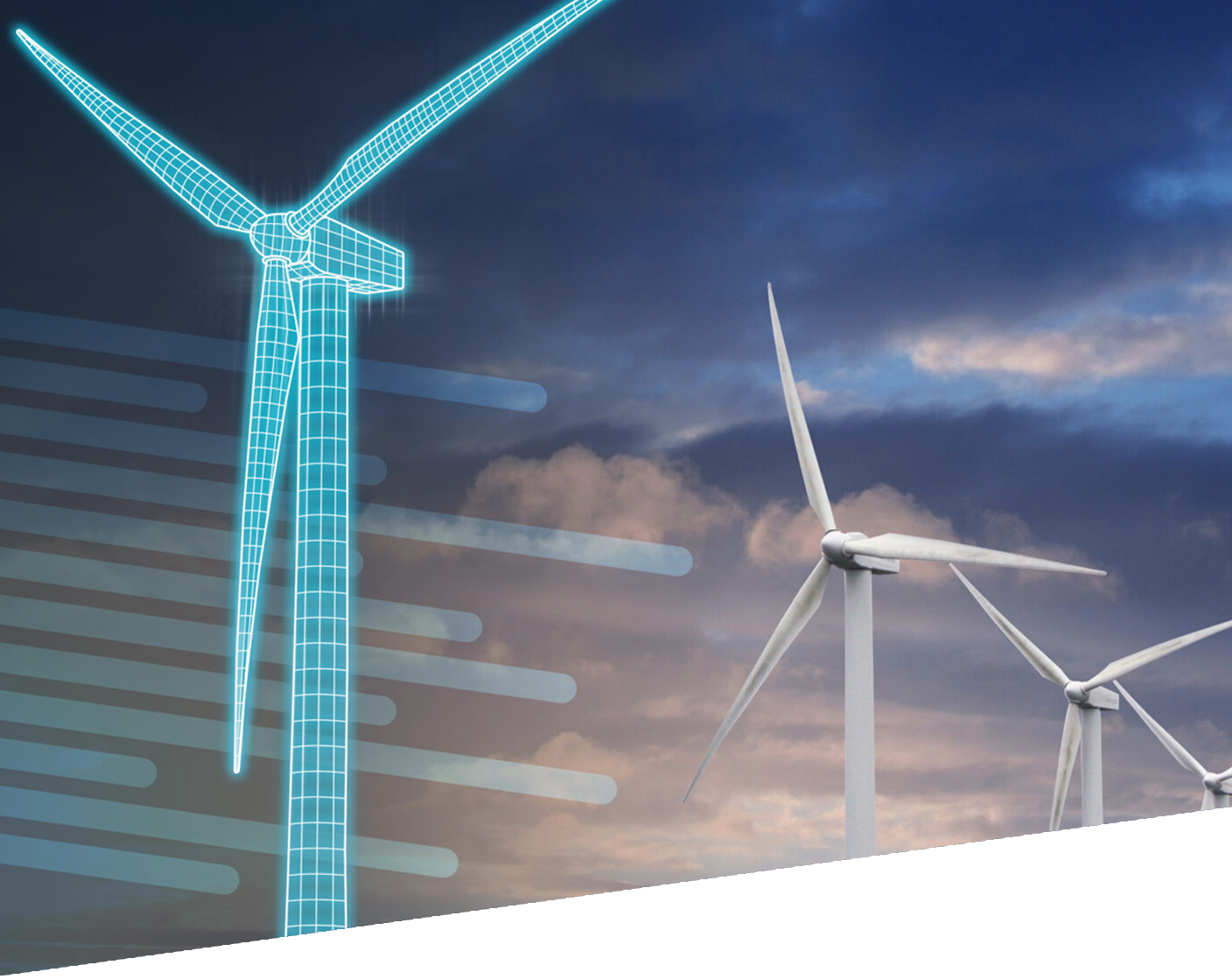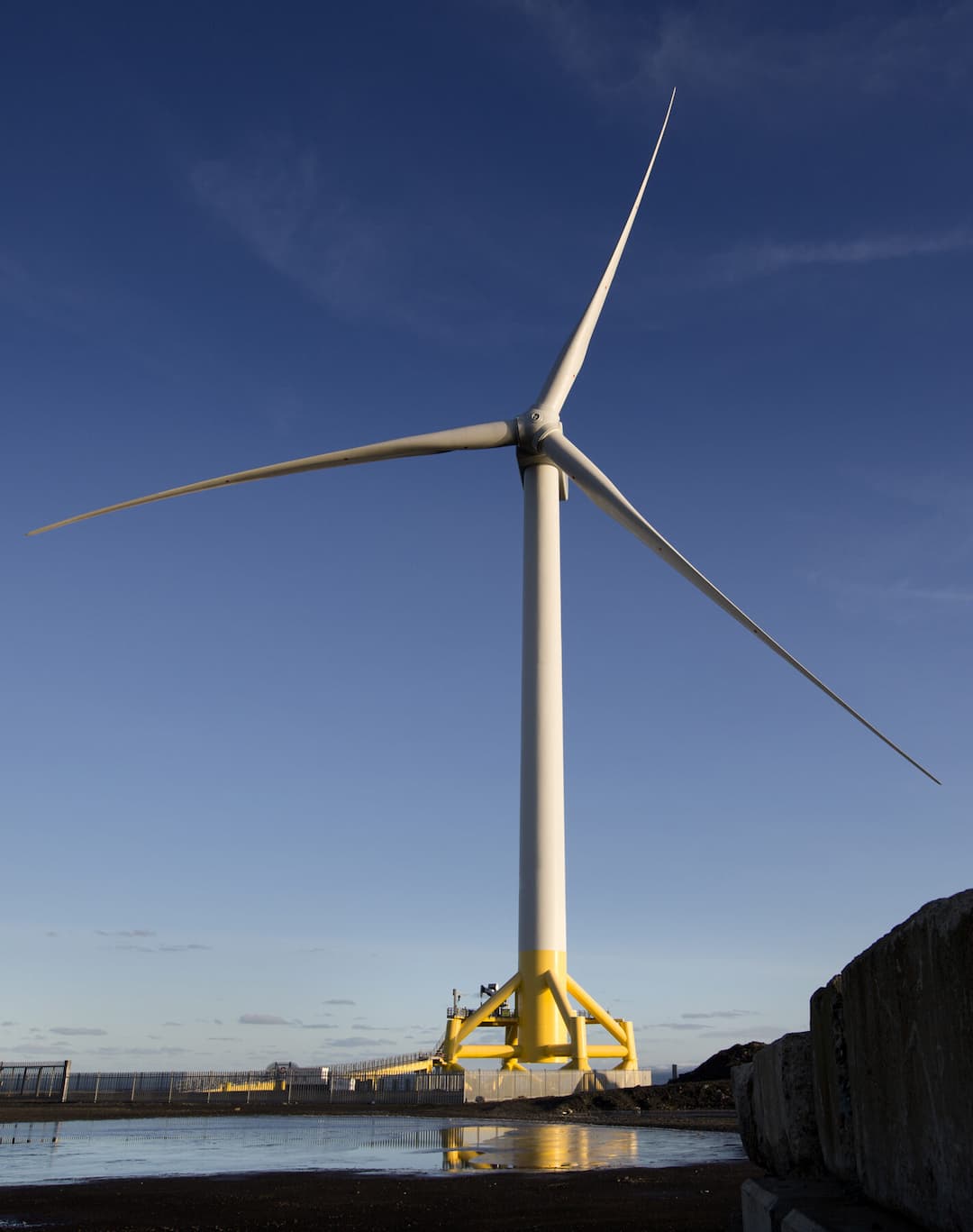
OUR DEMONSTRATION TURBINE
Located off the Fife coast, our Levenmouth Demonstration Turbine (LDT) is the world’s most advanced, open-access offshore wind turbine dedicated to research and development.
The LDT plays a major part in the development of future technologies to lower the cost of offshore wind, offering opportunities for UK supply chain and technology development. Sitting so prominently at the heart of the Levenmouth communities, it is also vital that the turbine also plays a role in locally developing and supporting the next generation of Scottish engineers.

LDT STATISTICS
Originally acquired from Samsung in 2014, it stands at 196 metres from blade tip to sea level, with each of its blades weighing the equivalent of 15 family cars, and generating enough electricity to power 4,800 homes.
22,986 MWh of electricity generated
7,414 homes powered
7,050 tonnes of CO2 offset
800+ sensor outputs reporting from the turbine
Having the turbine available as a site that we can access easily, compared to a genuine offshore site, is enormously valuable… It is of huge significance in terms of reducing the cost and time of bringing new systems to market.
Phillip Taylor
Managing Director, Pict Offshore
SERVICES AVAILABLE
Unique among offshore wind testing facilities, the towering 7MW offshore wind turbine plays host to some of the industry’s most exciting innovations for testing and validation, attracting SMEs for technology development and demonstrations. Connected to shore by a short ramp, the LDT is an integral part of our testing and validation facilities. It allows developers to demonstrate new systems and methods – without the associated time and costs of conducting tests at a working offshore wind farm.

RESEARCH AT LDT
We work closely with key academic and industry stakeholders to align the research programme of the Levenmouth turbine with industry priorities to drive cost reduction in offshore wind. We also use the turbine to establish the Platform for Operational Data (POD). Data sets are collected from the 7MW Levenmouth Demonstration Turbine, which provides better access to quality data leads. We support innovative research projects and product development through data provision to academics, researchers, and the wider community pursuing growth opportunities in renewables.

RAS TESTING
The offshore wind sector has the potential to cut its inspection costs by almost 40% by integrating robotics and automated systems into its operations. LDT is the test-bed for both SMEs and academic developers working in this area, hosting demonstrations of crawling, climbing, aerial and sub-sea robots.

DATA & DIGITAL SERVICES AT LDT
The turbine is also the test-bed for experimentation with a variety of new digital applications, led by ORE Catapult’s Data and Digitalisation team in partnership with technology developers. Bristling with more than 120 packages of instrumentation, the facility hosts everything from lidar installations, novel lightning strike detection systems and even sensors that monitor the conditions within its nuts and bolts.

STEM & LOCAL OPPORTUNITIES
As the turbine turns, the electricity it generates is fed into the National Grid, powering local homes. Any revenue generated first covers the costs of operating the turbine and then the surplus is reinvested back into our research agenda and wider activities, as well as a skills development agenda for the local area. Since 2016, we have funded a STEM ambassador at Levenmouth Academy, which has evolved into a full-time STEM Principle Teacher position, delivering extensive programmes throughout the school in areas such as robotics, drones and programming.
CONTACT OUR TEAM


